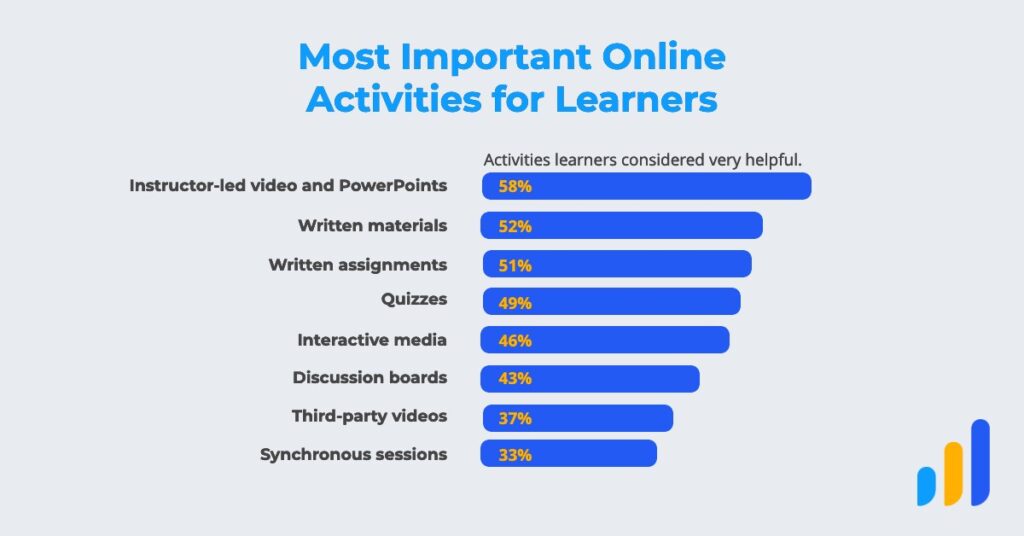
How to Make Better Use of Synchronous Sessions
Synchronous (a.k.a. “live”) sessions are some of the most time-intensive work you can do as an educator. How can you make them more useful?
As an educator, time is your most valuable resource. It’s the one thing you can’t scale easily as your course audience grows, and the main limiting factor in keeping you from reaching your goals. There just isn’t enough time.
Because of this, synchronous sessions (meaning classes taught in real time) have long held an ambiguous place in online education. On the one hand, they take a lot of time. Unlike a video, which can be recorded once and then delivered millions of times, a synchronous session must be given over and over again.
On the other hand, they’re what instructors are most familiar with, because they most closely follow the traditional teaching format. They’re also deceptively easy to launch. Want to offer a course tomorrow? Sell access to a webinar!
With all this in mind, consider this: According to statistics published by educationdata.org, synchronous sessions were ranked lowest on a list of activities deemed most valuable by online learners.
Which Online Activities Are the Most Helpful?
Now, the fact that a third of students rank synchronous sessions as “very helpful” is still good news. Unfortunately, 17% said they “did not use them,” leaving 50% of students with no particular opinion on them one way or another. For a resource that’s taking up so much of an instructor’s time, these aren’t encouraging results.
However, I suspect that the real reason synchronous sessions are ranked so low has less to do with the content itself, and more to do with how these sessions are structured. It simply begs belief that learners aren’t finding one-on-one tutoring time or well-structured collaborative time with course mates valuable.
At the same time, we’ve all sat through a rambling virtual seminar full of interruptions and irrelevant tangents. The more a session feels like a badly run meeting, the less anyone wants to attend.
The question we need to answer then becomes: should we do away with synchronous sessions altogether? But rather: How can we make synchronous sessions better? Here are a few ways to start.
1. Fifteen minutes one-on-one is more valuable than two and a half hours of ten-on-one.
One way to help instructors improve their use of synchronous sessions is to substitute longer group courses with shorter, one-on-one time with learners. Many learners crave personal time with the instructor, where they have the instructor’s full attention, and can ask whatever questions they want without worrying about appearing foolish in the eyes of their peers. And yet instructors are often hesitant to offer this, feeling that it will take up too much of their time.
However, if the instructor keeps strictly to the time slot, they need not be that overwhelming. Moreover, those students who don’t find synchronous sessions helpful may not even sign up, while those who do will get more of what they want without sitting through a long lecture. It’s a win-win.
2. Instructors should rehearse the content of their presentations to ensure a smooth delivery.
Very few people are able to walk into an online course and just wing it. In fact, those who believe they can are probably not doing as good a job as they think. Part of why learners sometimes dislike synchronous sessions is that the presenters stumble over their content, ramble, or take too long to get to the meat of their lesson.
Meanwhile, video content is more pulled-together. The content creator has time to practice and make edits. There’s less wasted time.
If you are giving a live class, make sure you take the time to warm yourself up before a lesson, even if you’ve delivered the lesson a hundred times. You’ll feel more confident if you are prepared, and your learners will notice the difference.
3. Synchronous sessions should involve activities that cannot be done asynchronously.
If you’ve ever sat through a tedious meeting thinking “this could have been an email,” you probably know how learners feel when a live course never goes beyond what could have been in a prerecorded video. If you want to make your learners sit up and take part in your synchronous session, use it for activities that can’t be done asynchronously.
One way you can keep sessions new each time is to turn the time over to your learners. Have your learners take turns presenting the work they’ve done and offering feedback to their peers. Create discussion topics, and have learners talk through the material. Write debate questions, and choose learners to prepare pro and against positions. Put forward a creative problem and see how your learners use the skills they’ve gained to solve it together.
Collaboration lets learners make contacts and form friendships within a peer group, which is another reason many turn to online learning in the first place. It’s not always about you—sometimes you’re just the facilitator of other connections.
Make your synchronous sessions better, but also invest in asynchronous learning.
For as much as I’ve championed synchronous learning in this post, I believe most online educators should invest the bulk of their time on building up the asynchronous infrastructure that will allow learners to set their own schedule while freeing educators to create new material.
Synchronous sessions simply don’t scale well. An educator who hopes to sell courses to hundreds—if not thousands—of learners simply can’t do so effectively if their course is entirely focused on synchronous learning.
More importantly, one of the greatest benefits of online learning is that it gives learners flexibility to fit learning into their schedule. Educators who only offer courses at a set time are missing out on a huge demographic.
If an educator builds out their online course with the resources and activities learners find most helpful, they can save synchronous sessions for moments when it’s the most valuable—offering learners support, or creating a collaborative project—and prevent it from becoming just another source of meeting fatigue.

LearnDash Collaborator
@LearnDashLMS







